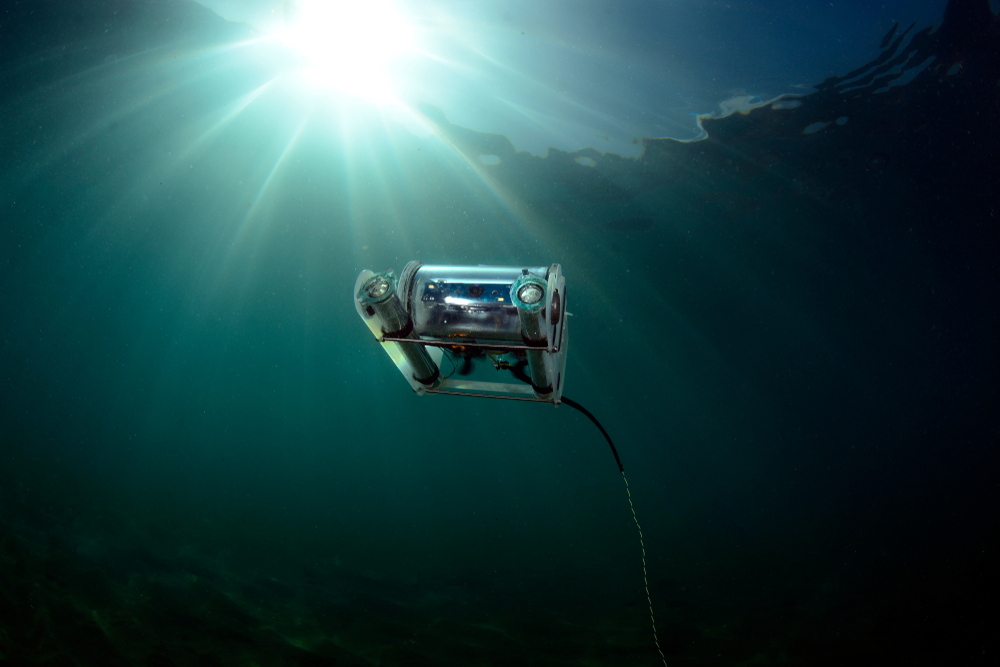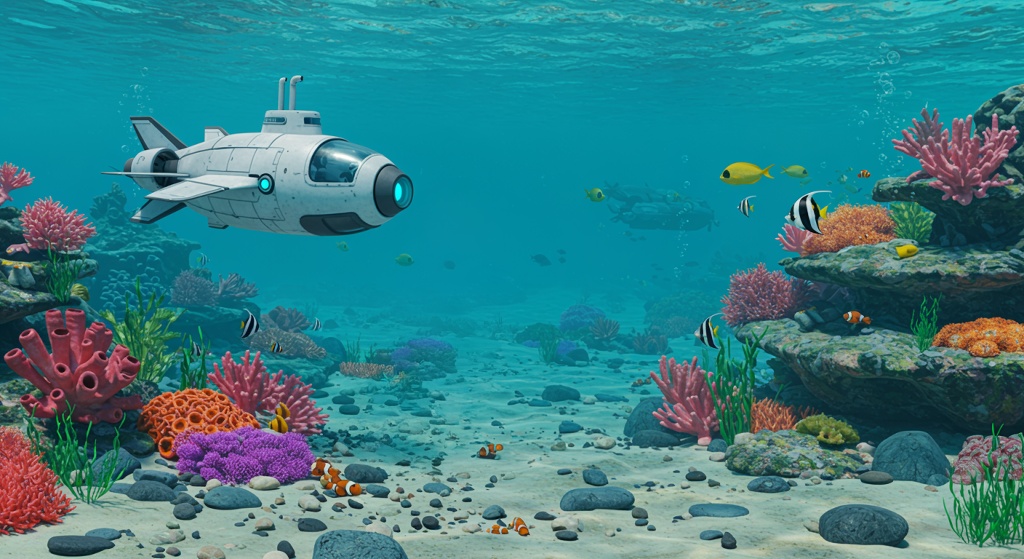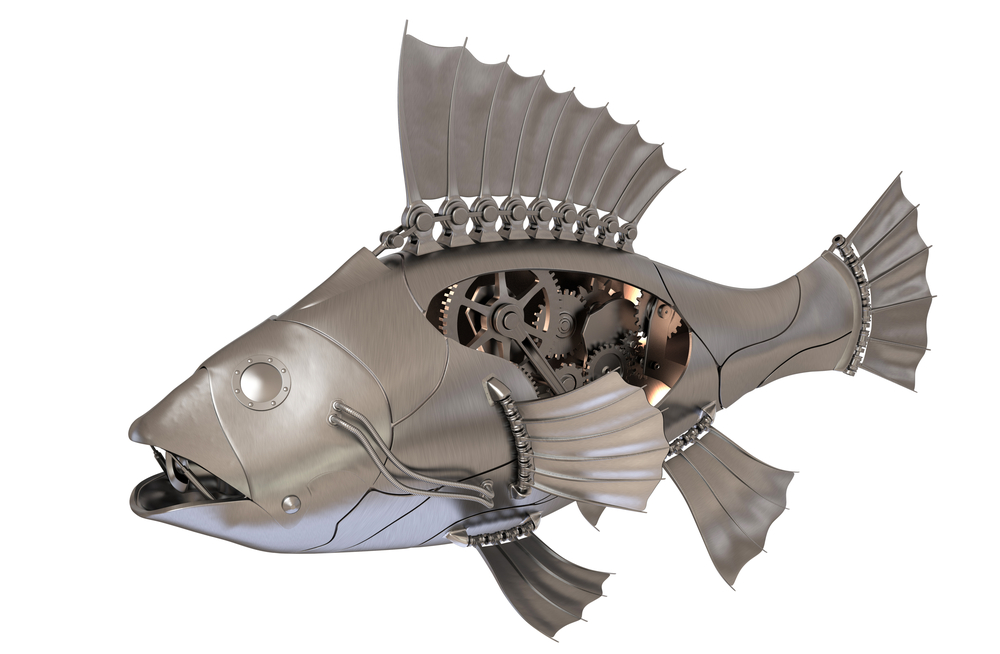Your cart is currently empty!
The UK Has Created a Robot Fish That Eats Ocean Plastic and Powers Itself by Digesting It, Eliminating the Need for a Battery

The ocean has always been both a provider and a mirror — offering food, oxygen, and beauty, while reflecting the choices we make on land. In recent decades, that reflection has grown murkier, clouded by an ever-growing tide of plastic waste. Once celebrated as a miracle material, plastic has found its way into every marine habitat, breaking down into microscopic fragments that slip through filters, evade cleanup, and infiltrate the bodies of sea creatures and humans alike. The problem is no longer just visible trash washed ashore; it is a diffuse, invisible threat embedded in the very systems that sustain life.
Addressing this challenge demands more than beach clean-ups or recycling drives. It requires a shift in how we think about solutions — not as battles against nature, but as collaborations with it. Around the world, scientists and engineers are turning to biomimicry, studying how living organisms move, heal, and survive, and then translating those principles into technology. In the United Kingdom, this approach has taken the form of a remarkable innovation: a robotic fish that powers itself by digesting the plastic it collects, eliminating the need for traditional batteries and thriving on the very pollutant it is designed to remove.

The Hidden Tide of Microplastics
The plastic problem in our oceans has evolved from the visible menace of floating bottles and tangled nets into an insidious crisis of fragments too small to see yet impossible to ignore. Microplastics — particles less than five millimetres in size — now contaminate nearly every corner of the marine environment. They drift in seawater, settle into deep-sea sediments, embed themselves in Arctic ice, and lodge within the bodies of marine creatures. These particles arise from multiple sources: the slow breakdown of discarded packaging, synthetic fibres released during laundry, the dust of worn vehicle tyres, and even microscopic debris from the friction of shoe soles on pavement. As they degrade, plastics release chemicals such as bisphenol A (BPA), phthalates, and heavy metals — substances that research has linked to hormonal disruption, inflammation, and cellular damage in living organisms.
The ecological consequences are profound. Fish and shellfish that ingest microplastics often feel full without having consumed the nutrients they need, leading to starvation. These particles then pass up the food chain — from plankton to predators — and eventually onto human plates. In recent years, scientists have detected microplastics in human lungs, blood, and even placental tissue, raising urgent questions about their potential impact on long-term health. Unlike large debris that can be spotted and removed, these microscopic particles are almost impossible to filter out once they enter ecosystems, making prevention as critical as cleanup.
The scale of the crisis underscores its urgency. A 2023 study published in PLOS ONE estimated that more than 170 trillion plastic particles‘ are afloat in the world’s oceans — and that this number is accelerating at an alarming rate. Unlike the dramatic images of a sea turtle ensnared in a six-pack ring, the microplastic crisis remains largely invisible, often failing to provoke the same public outcry. Yet its reach is far more pervasive, infiltrating marine habitats, threatening biodiversity, and embedding itself in the systems that sustain life on Earth. Addressing it demands not only innovative solutions but also a fundamental shift in how we produce, consume, and dispose of plastic.
A Fish That Feeds on Pollution
Off the coast of southern England, a new kind of swimmer has emerged — not born of bone and blood, but of engineering and intent. Developed by researchers at the University of Surrey, this robotic fish mimics the movements of its living counterparts with a flexible tail that propels it gracefully through the water. But unlike real fish, it is not hunting plankton or prey. Its quarry is microplastics — the very particles choking marine life and infiltrating food chains. What sets this design apart is its self-sufficiency: it requires no battery, instead generating its own electricity by processing the plastic it collects.
The mechanism is as innovative as it is symbolic. The robot draws in microplastic-laden water through a filtration system, compressing and processing the particles to produce low-voltage electricity, which in turn powers its internal systems. In a twelve-hour patrol, it can collect over two kilograms of microplastics, all without relying on fossil-fuel-generated energy or battery swaps. Constructed from soft, biodegradable materials, it poses no threat to marine life — swimming silently, avoiding collisions, and surfacing when its collection chamber is full. The idea is not to deploy one such fish, but to envision fleets of them, working in coordinated swarms to clean coastlines and harbours.
This approach embodies a growing movement in environmental technology: biomimicry. By studying how marine creatures move, feed, and interact with their environment, engineers are designing machines that blend into ecosystems rather than disrupt them. In this case, the form and function of a fish have been adapted not just to coexist with the ocean, but to restore it. If scaled successfully, such innovations could become part of a global network of autonomous cleaners, quietly reversing some of the damage wrought by decades of unchecked plastic pollution.

A Global Wave of Ocean Robotics
The UK’s plastic-digesting robo-fish is part of a broader, international surge in ocean-cleaning technology. In China, researchers at Sichuan University have developed a miniature marvel just 13 millimetres long — smaller than a paperclip yet capable of swimming with remarkable agility. Its soft body, inspired by the inner layer of clam shells, attracts and traps microplastics through electrostatic and chemical interactions. This tiny swimmer operates on infrared light and can self-heal up to 89% of its functionality if damaged, giving it a durability that extends its usefulness in challenging marine environments.
Meanwhile, in South Korea, engineers are applying fish-like robotics to a different purpose: protecting aquaculture. The Ichthus V5.5, developed by researchers at Imperial College London, swims through fish farms to monitor water quality and detect pollution before it becomes harmful. Its quiet, oscillating movements and ability to turn within a radius just one-tenth of its body length allow it to navigate without disturbing marine life. It even autonomously returns to a floating dock to recharge, much like a sea creature rising for air.
These innovations, though varied in design and mission, share a common principle: working with nature rather than against it. By taking cues from marine life, scientists are finding ways to solve environmental problems with tools that integrate into the ecosystems they serve. Across research hubs from London to Sichuan, the idea of machines that blend into the ocean’s rhythms — instead of intruding upon them — is gaining traction, signalling a new era in conservation technology.
The Boundaries of Robotic Solutions
As promising as they are, robotic fish remain at an early stage of development. Even the most advanced prototypes, like the University of Surrey’s energy-harvesting model, face the fundamental challenge of scale. One machine, no matter how efficient, can only patrol a limited area. Cleaning an entire harbour is one thing; cleansing the open ocean, where plastics travel thousands of miles on shifting currents, is another. Achieving meaningful impact would require large fleets operating in coordination, with robust navigation systems, reliable maintenance, and substantial funding.
Endurance is another hurdle. The ocean is an unforgiving environment — corrosive saltwater, unpredictable weather, and abrasive debris all take their toll. While some designs incorporate self-healing materials, others still depend on battery docks or manual retrieval for recharging, which limits their autonomy. Power systems that work in controlled conditions may struggle to perform consistently in rough seas or remote regions.
Perhaps the most pressing limitation, however, is that robotic fish address the symptom rather than the cause. They can remove what is already there, but they cannot stem the millions of tonnes of plastic entering the ocean each year. Without systemic change in how plastic is produced, used, and disposed of, these machines risk becoming an ongoing necessity rather than a stepping stone to a cleaner future. As Professor Philip Demokritou has cautioned, the long-standing industrial mindset of “make the mess now, clean it up later” is not sustainable — not for the planet, and not for the generations who will inherit it.
Rethinking Our Plastic Footprint
Plastic was never inherently harmful. Its strength, lightness, and versatility made it a revolutionary material, transforming industries and making countless products more affordable. But its very durability has turned it into an environmental burden, especially when used for single-use items designed to be thrown away within minutes yet persist for centuries. Over time, convenience has eclipsed responsibility, and the global economy has normalised disposability as a default.
To truly address plastic pollution, innovation must be paired with prevention. This means investing in biodegradable alternatives, such as plant-based coatings for food packaging that naturally degrade without leaving toxic residues. Research teams, including those at Rutgers University, are already creating materials from renewable sources that could replace cling film, bubble wrap, and polystyrene — offering the same protective qualities without the environmental legacy. Others are exploring packaging made from food waste and natural fibres, designed to fit into a circular economy where materials are reused, repurposed, or safely returned to nature.
Reducing plastic waste is ultimately a collective effort that goes beyond individual choices. It requires businesses to rethink product design, governments to legislate against unnecessary single-use plastics, and consumers to support solutions that prioritise environmental health over short-term convenience. If embraced widely, these measures could reduce the need for high-tech clean-up operations altogether, allowing innovations like the robo-fish to serve as emergency tools rather than everyday necessities.
Learning from Nature to Protect It
There is something both poetic and sobering about a machine that survives by consuming the very thing that threatens its living counterparts. The robo-fish is more than a technological achievement; it is a reminder that human ingenuity, when guided by the patterns and wisdom of nature, can be turned toward restoration rather than exploitation. In observing how fish move, how shells heal, and how ecosystems maintain balance, scientists are rediscovering the principles that once governed our relationship with the natural world.
Yet the real lesson of the robo-fish is not about machines at all. It is about choice. Technology can help us repair what we have broken, but it cannot absolve us of the responsibility to prevent harm in the first place. The future of the oceans will not be decided solely by the inventions we deploy, but by the values we uphold — whether we continue to treat nature as an expendable resource, or recognise it as the foundation of all life.
Let the robo-fish serve as both inspiration and warning: a symbol of what is possible when we listen to nature, and a prompt to act before the damage runs too deep. Supporting sustainable materials, advocating for policy change, and reducing plastic use at its source are not abstract ideals — they are practical steps each of us can take. If we combine the ingenuity of our technologies with the wisdom of restraint, we may yet write a different story for our oceans, one in which machines and humanity work together not to clean up after destruction, but to keep it from happening at all.
